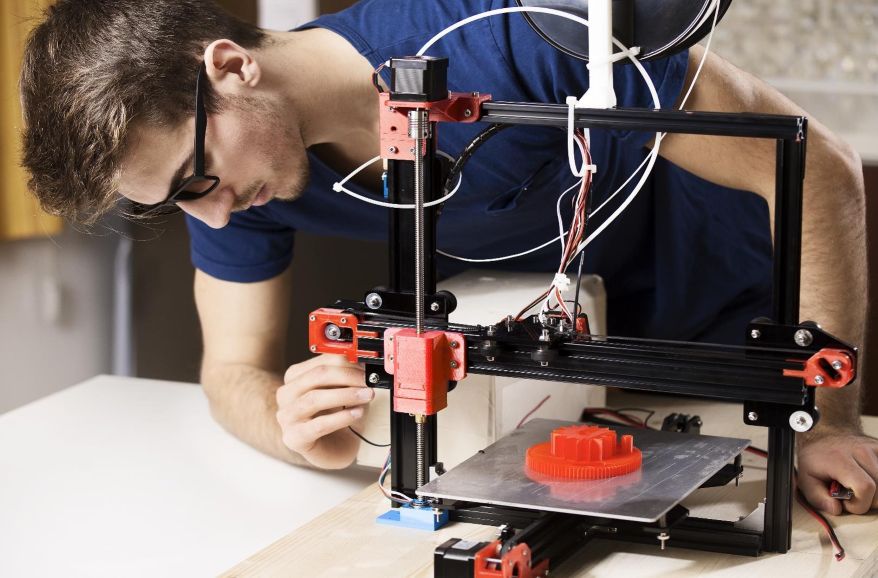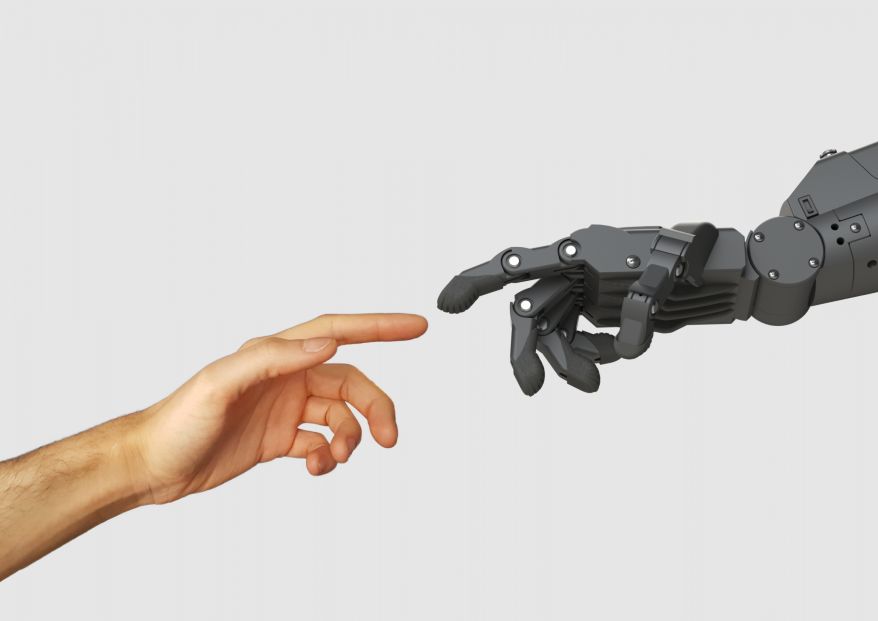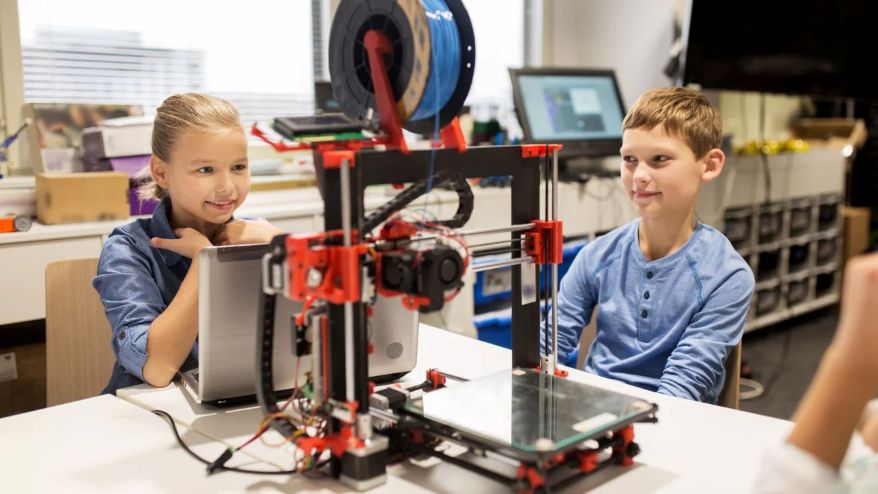
Virtual 3D printing conferences are significantly changing how teachers and students learn STEM. Moreover, these online events make education more fun, interactive, and open to all. For instance, the BitSpace 3D Printing Conference Online, a prominent 3D printing technology conference, inspired many young learners last year. As a result, 3D printing now lets students build real things and share ideas worldwide. Furthermore, they can link with others and solve real-world problems. In conclusion, this blog explains how virtual 3D printing grows STEM education.
Making STEM Hands-On and Engaging
3D printing conferences help students see and touch ideas instead of just reading. In fact, in class, students create objects and learn by making mistakes and trying again. For example, universities use 3D printed fossils. Students touch and study them in detail. Consequently, this makes lessons clear and easy to remember (Ford & Minshall, 2018).
In younger grades, kids make Rube Goldberg machines or simple assistive devices. By doing so, they use their hands and minds together. As a result, they become more confident and curious as they create. For example, when students build tool cases or phone holders, they practice teamwork. Moreover, working in groups builds their social and speaking skills.
3D design pushes problem-solving. Kids look for challenges, design devices, and fix them if needed. This process grows their thinking and creativity. Failing is not bad. Instead, it leads to learning and a new way to try (Ford & Minshall, 2018).
Also Read https://nycstem.in/understanding-international-stem-day-and-its-global-impact/
Fostering Inclusivity and Diversity
3D printing conference welcomes everyone. It opens doors for students with different needs. For example, some teachers make periodic tables in Braille. Others use sign language symbols. These tools help blind and visually impaired (BLV) students take part in science (Cummings et al., 2022).
More girls and underrepresented students join especially when they feel welcome and included in 3D projects. Moreover, communities in 3D design encourage students from many backgrounds. As a result, this grows diversity and new ideas in STEM
Transformative Virtual Platforms
Virtual platforms for 3D printing conferences are crucial to making these changes real. For example, programs like Communique Conferencing, 6Connex, Brella, SpotMe, and Whova build 3D spaces online. As a result, students can visit workshops, chat, and work with experts from home. Moreover, new tools like altiro3D turn flat images into real 3D objects.
Now, any learner can see tricky science ideas in 3D. Thanks to these digital spaces, kids and teachers can visit booths and use resource banks. As a result, the outcome is more fun and meaningful learning.
Enhancing Collaboration and Global Networking
Virtual 3D Printing conferences connect people worldwide. For example, sessions like “3D Printing with A Purpose” ask students to design helpful devices. Everyone works together and shares results. Students build skills in teamwork and responsibility.
They attend workshops like “The Student Experience,” which makes learning social and lively. Afterward, their new friends become part of a lasting network. Consequently, this teamwork boosts confidence and sparks new ideas.
Sharing Best Practices and Encouraging Innovation
Online events help teachers and students share what works. For instance, teachers talk about using 3D printers in class. Some even share great tips or describe problems and solutions. Additionally, industry experts lead sessions so people can learn real techniques.
This sharing of ideas helps each person do better in their own school. Furthermore, after conferences, many teachers use new tricks and resources with their students.
Increasing Accessibility and Reducing Costs
Online 3D printing conferences help more students join STEM than ever. Now, a child in a remote area learns next to a child in a big city. No flights, no hotels, no travel costs. Closed captions, screen readers, and other help tools let everyone join. This makes STEM more equal.
Here is a cost comparison table:
| Expense Type | In-person Conference | Virtual Conference |
| Travel | High | None |
| Accommodation | High | None |
| Registration | Medium/High | Low/Free |
| Materials | Limited | Expanded (3D kits) |
Money saved on travel can buy more materials for classrooms. This helps more students get hands-on tools.
Real-World Impact: 3D Printed Prosthetics

One of the biggest successes in virtual conferences is the making of 3D printed prosthetics. Specifically, students in high school and college design and print hands and arms for people who need them. Consequently, this brings STEM work to real life and helps others (Zuniga et al., 2015).
Jade Myers, a Ph.D. student, built a lighter, better prosthetic socket. She used ideas from sports shoes. Her team worked with doctors in Haiti. They used online tools to help people who lost limbs in earthquakes.
Groups like e-nable let students work together online. For example, at the University at Buffalo, kids joined e-nable workshops during the pandemic. They designed and built prosthetics at home and shared the results with teams worldwide. The impact is global and lasting.
Overcoming Challenges
Virtual 3D printing Conference events have some problems. Some students do not have good internet or a 3D printer. Some schools cannot buy new tools. Event planners help by offering recorded videos and tech support. Sometimes, schools share resources. This builds local groups and brings in more kids.
Keeping students interested in online events can be hard. Still, these events boost attendance for girls and students from smaller schools (Chang, 2021). Some kids still love in-person meetings best. To help, organizers make small chat groups and social spaces online.
Quality matters. Speakers are picked carefully. Feedback from students helps each event get better. Lesson plans and clear instructions help teachers and students trust the process.
The Future: Trends and Best Practices

The future of 3D STEM learning is bright. Organizers use more virtual reality and AI-powered tools each year. Interactive labs and networking make the experience strong. Many schools now use conference lessons in class. Students solve problems, meet experts, and learn about new careers.
The best virtual events use hands-on learning, small group talks, and let students present their projects. Diversity is key. Everyone is welcome to speak and join.
Virtual 3D printing conferences have made STEM more accessible and creative. Every student can learn, build, and help others. The simple tools and open doors make education fairer. As these technology-powered communities grow, the future of STEM will be bright, inclusive, and possible for all.
References
- 3D printing in the field. (2022). In Metal Powder Report (Vol. 77, Issue 1). Auricle Global Society of Education and Research. https://doi.org/10.12968/s0026-0657(22)70005-7
- Coakley, M., & Hurt, D. E. (2016). 3D Printing in the Laboratory: Maximize Time and Funds with Customized and Open-Source Labware. In SLAS Technology (Vol. 21, Issue 4, pp. 489–495). Elsevier BV. https://doi.org/10.1177/2211068216649578